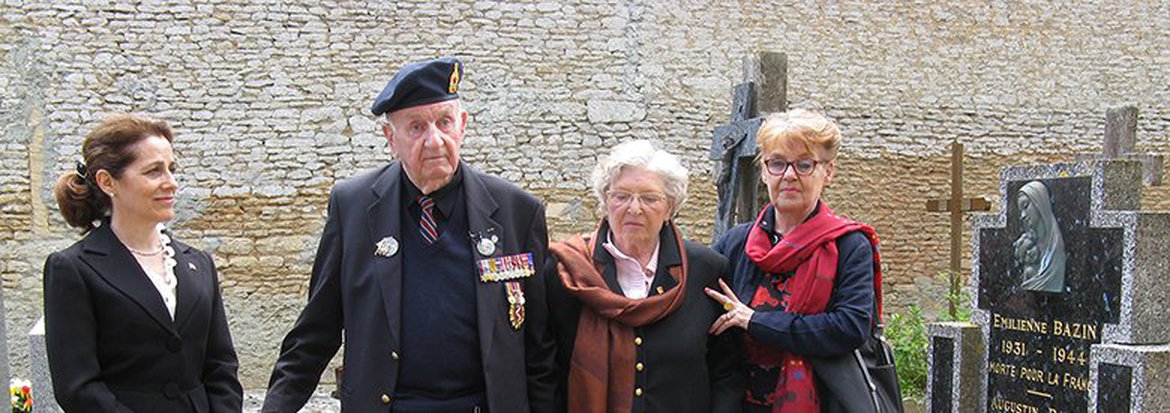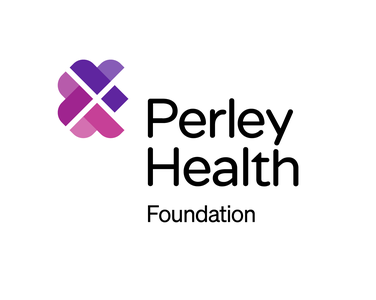What Goes Around, Comes Around

For decades, Bud Hannam rarely talked about his wartime experiences. In recent years, though – since remarrying and attending D-Day celebrations abroad – he has begun to share his remarkable and inspirational stories.
“Many soldiers did much more than I ever did,” says Bud Hannam. “I didn’t think people would be interested in my stories.”
According to family lore, a nurse at Toronto’s Salvation Army Maternity Hospital (now the Grace Health Centre) called him Buddy shortly after his birth in 1925. “Apparently, the nurse liked to call newborns by their names,” laughs the 92 year-old Veteran. “She didn’t know my parents had chosen Bertram Cecil, so she called me Buddy. I’ve been known as Bud ever since.”
Bud’s parents emigrated from Great Britain as children. His father, Bert, enlisted in the Canadian Forces at age 14 and was activated two years later as part of the 37th Battalion.
Captured at Ypres, Belgium after the first gas attack of World War I, Bert escaped a series of German prisoner-of-war camps and eventually made his way back to Holland.
“I found Dad’s war stories so exciting that I was determined to enlist after Canada declared war on Germany,” says Bud. “I was too young for active service, but trained in the reserves. One day, they asked for volunteers to go overseas and a recruitment officer agreed to lie about my age. Before long, I shipped out to England to complete my training as a medic.”
On June 6, 1944, Bud Hannam and the 23rd Field Ambulance were part of the third wave at Juno Beach. He was one of the approximately 14,500 Canadians who invaded Nazi-occupied Europe on D-Day.
“The barrage was deafening,” he recalls, “I could see shells screaming through the air. When the ramp went down, one of the first things I saw was a dead Canadian washing up on shore. A beachmaster yelled at us to get off the beach and I was more than happy to obey. Our assembly point was in up the road in Basly, where we set up a forward dressing station.”
The Battle of Normandy raged for the next 10 weeks and claimed more than 18,000 Canadian casualties, including more than 5,000 killed. One day, Bud’s unit came under attack. He was hit by shrapnel from a Moaning Minnie – a type of Nazi mortar nicknamed by allied troops for the peculiar sound it made. Bud was knocked unconscious, deafened for a few days and suffered a flesh wound on his arm. Once his hearing came back, though, he returned to active duty.
Another attack soon afterwards touched off a series of events that continue to play out today. Two French children, Émilienne and Yvonne Bazin, were tending their family’s cows when a Nazi plane strafed the field. The girls were rushed to Bud’s field hospital. Yvonne’s wound was not severe. Bud frantically tried to save Émilienne, but she died in his arms – an experience that continues to haunt him: “I’ll never forget the look on her face; she was just a child,” he says.
Bud’s unit advanced as the Allies swept through Europe. While off duty one day in Belgium, he and a fellow soldier heard pipe-organ music coming from a local café and went in to investigate. There, he struck up a conversation with Maria Carolina Dierckx, a young woman from the Belgian port city of Antwerp.
Maria had learned a little English working for the Allies following the liberation of the city in September, 1944. The two soon fell in love. Maria’s family had fled to Laarne, Belgium to escape the Nazis attempt to destroy Antwerp’s port facilities: during 1944-45, more than 2,000 V1 and V2 rocket bombs fell on Antwerp, killing thousands and destroying much of the city.
“For the final months of the war, I was based near Nijmegen, Holland,” Bert recalls. “Whenever I could get some leave, I would hitch a ride on Maple Leaf Down – the military route that led away from the front and into Belgium – to visit Maria. We married in Antwerp in 1946.”
Upon the couple’s return to Canada, Bud continued to work with Canadian Forces. He and Maria raised two boys: Bill and Bob. The years flew by and soon there were two granddaughters, followed by four greatgrandchildren. In the late 1990s, tragedy revisited the Hannam family. Son Bob contracted multiple myeloma (cancer of the blood) and died in 1997 at the age of 49. Four years later, Maria died of the same disease at the age of 79. Bud and Bill Hannam suspect that the cause was a contaminated polio vaccine administered in the 1950s.
“I remember that we all went to get the vaccine at the same time, and Mom and Bob went into a different line than I did,” recalls Bill. Medical research has not proven a causal link, although evidence suggests some correlation.
Bud remained a widower for nearly a decade, until he met Rosy Nuñez, a Mexican dentist who immigrated to Canada in the 1990s to provide a better life for her three children. Rosy inspired Bud to start sharing his war experiences and the two attended D-Day anniversaries in Europe. During one of the visits, he returned to the building in Basly that had housed his field hospital in 1944. Town officials announced plans to name the building Place Bud Hannam and invited Bud and Rosy to a special celebration. There, an elderly
woman asked Rosy if the Veteran might know anything about her younger sister, who had died in an Allied field hospital in 1944.The woman was Yvonne Bazin, Émilienne’s sister.
“As you can imagine, we were ill overcome with emotion,” recalls Rosy Hannam. “We learned that Yvonne was still wracked with guilt because her parents had blamed her for her sister’s death. I think that initial meeting and the friendship that’s developed – we’re still in touch – has put everyone’s heart at ease.” In recent years, Bud has frequently recounted his wartime experiences to family members, schoolchildren and reporters. In 2014, he and Rosy travelled to France for celebrations marking the 70th anniversary of D-Day
and visited Place Bud Hannam. “I don’t think I did anything more than other soldiers,” he says. “The plaque is nice because it will remind the children of the price of freedom.”
Bud moved into Perley Health in August, 2017. “I’m quite pleased by the quality of care here,” Bud says. “This place is incredible,” says Rosy, “Bud has bounced back very well thanks to the expertise of staff and the wonderful atmosphere here.”
When I visited, Bud was happy to sit back, sip on a well-deserved beer and accept the enjoyment that his life’s journey inspires in others.

